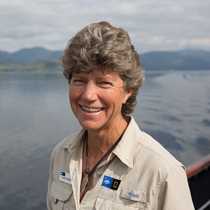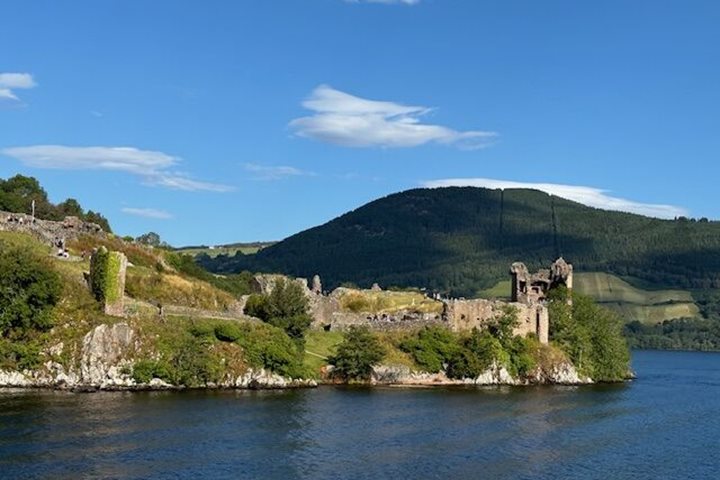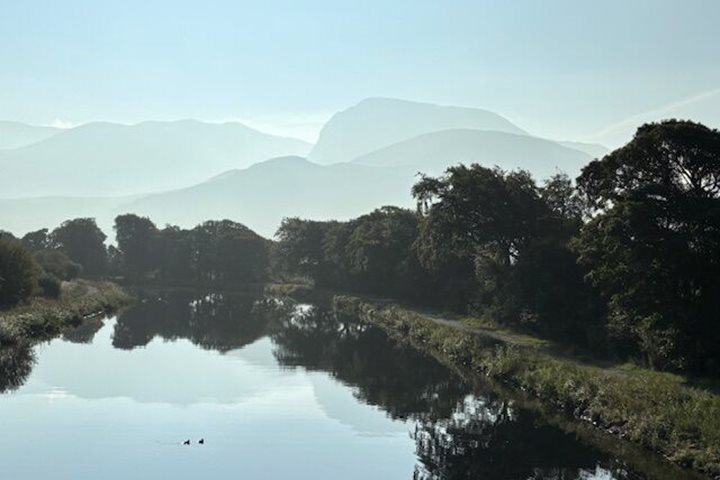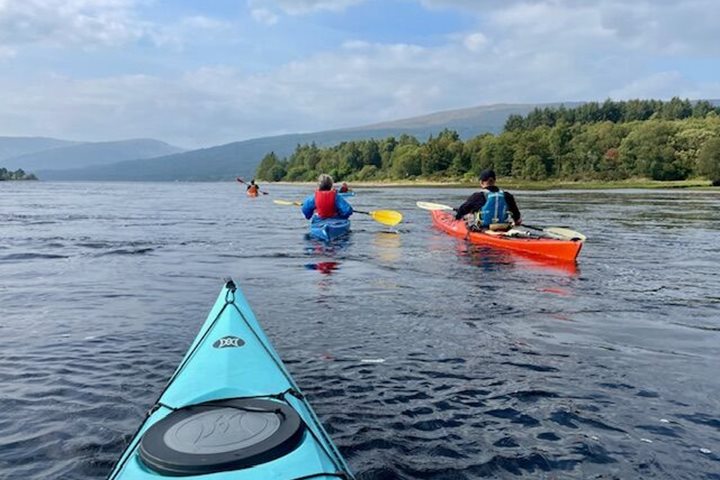Wet, windy weather greeted us today at our berth in Corpach and followed us through the morning. From this point on we will be traveling in the Caledonian Canal: 60 miles of constructed canal and natural lochs, with a total of 29 locks. We climbed several of those locks this morning, ascending Neptune’s Staircase, a series of 8 locks that raise the canal by 19 meters (62 feet) over a quarter mile. With the wind and rain, many chose to enjoy this first experience of the Canal’s locks indoors, either in the lounge or on the bridge.
Neptune’s Staircase was the first of many notable features along the Canal. Today, we passed though the hand-cranked Moi Bridge, the last Telford designed bridge on the canal. Further along, the verdant stretch of Laggan Avenue surrounded the ship. Here, the canal was dug down and trees planted to stabilize the spoil piled on the canal banks; the lush woodland reaches over the water making for a green passage along the narrow stretch. Not far past Laggan Avenue, the ship entered Loch Oich, the highest part of the Canal at 32 meters (106 feet) above sea level. From there onward, we descend until our final berth at Inverness.
Between Neptune’s Staircase and Moi Bridge, Robin presented a talk on “Natural Scotland,” describing Scotland’s geology, flora, and fauna and how this natural world interweaves with Scotland’s culture. After Laggan Avenue (and after lunch), Erika and Stephen provided personal instruction on smart phone photography. And then it was time to disembark and walk in the Scottish scenery.
The first walk of the afternoon was along the canal tow path, starting at Kytra Lock and ending in Fort Augustus. The walkers waved at those who stayed on the ship as Lord of the Glens sailed past, all to reunite at the day’s final berth in Fort Augustus. This small town was established as a fort in 1729, part of the effort to subdue the Jacobites. The town is named after William Augustus, second son of King George II, who led the government troops at the Battle of Culloden.
Once in Fort Augustus, we had another walking opportunity, following David on a nature-culture tour in the outskirts of town. We walked through pastures, oak woodlands, and into the Kilchuimen cemetery. In that graveyard, poet Robert Burns’ friend John Anderson is buried, and David pulled the poem Burns wrote for his friend out of his pocket, and recited “John Anderson, My Jo” in the peaceful setting. The walkers then clambered over a rock wall and completed a circular walk taking us back to town.
Before dinner, we had a special presentation by Captain Tony Reading on the history and construction of the Caledonian Canal. Then it was a fantastic meal and perhaps an after-dinner stroll before retiring after another diverse and full day in the Scottish Highlands.









